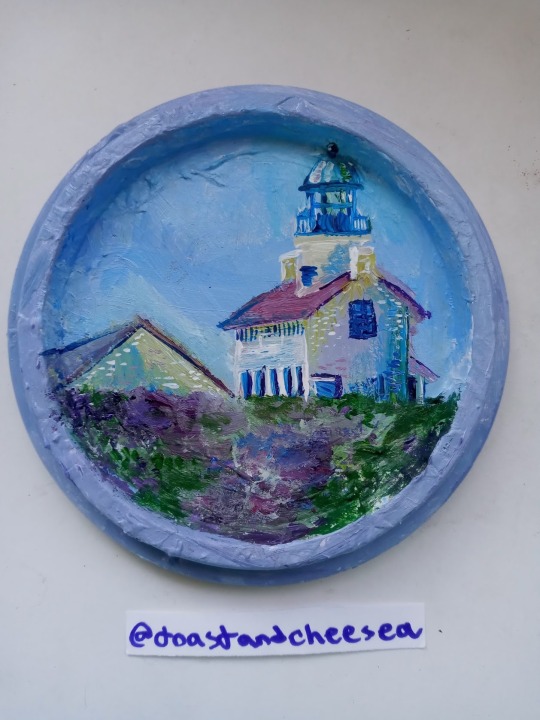#old point loma lighthouse
Text



Today, August 7th, is National Lighthouse Day in the US! The event was established during the bicentennial of when the US government created the US Lighthouse Establishment in 1789.
To kick off a week of lighthouses, we're starting with a book by the National Park Service and the Cabrillo Historical Association about the Old Point Loma Lighthouse (1978), located in San Diego, California. Included here are two pages about how the lighthouse was lit. Image transcripts below the cut.
For more information, check out these links:
National Lighthouse Day history from the US Lighthouse Society
The Lighthouses of Point Loma by the National Park Service
The Old Point Loma Lighthouse in our catalog
The Browne Popular Culture Library (BPCL), founded in 1969, is the most comprehensive archive of its kind in the United States. Our focus and mission is to acquire and preserve research materials on American Popular Culture (post 1876) for curricular and research use. Visit our website at https://www.bgsu.edu/library/pcl.html.
Image caption
Fresnel (fra-nel) lighthouse lenses came in seven different "orders," or sizes; first, second, third, three and a-half, fourth, fifth, and sixth. The first order were the largest, and the sixth the smallest. Generally, the larger the lens the greater its range. The larger lenses could be seen from further away than the smaller ones. Also, if a lens was high above sea level, it could be seen from further away than if it was at the water's edge. The ranges given in the illustration are median distances for a lens with a 1,000 watt bulb.
Lenses and Illuminants
Until the 1850's, nearly every lighthouse in the United States used a number of Argand lamps and parabolic reflectors for illumination. These lamps were placed "side by side around the circumference of a circle," and the number of lamps used depended upon the arc of the horizon it was desired to illuminate. For years a bulls-eye magnifying lens was used on each lamp, but these lenses were practically useless, and in 1840 they were removed, leaving the reflectors.
This system, which had become known as the American system, had but one virtue—the lamps were inexpen-sive. But their faults were legion: They were complicated, they used a vast amount of oil, they required constant attention, and, most important of all, they produced relatively little light.
In 1822 Augustin Fresnel, a French physicist, developed a lens apparatus which was to revolutionize lighthouse illumination. A Fresnel lens is like a glass barrel whose outer surface is made up of prisms and bulls-eyes. In a revolving or flashing light, the bulls-eyes are surrounded by curved, concentric prisms, concentrating the light of a central lamp into several individual beams, radiating like the spokes of a wheel. In the fixed, or steady light, the bulls-eyes become a continuous "lens belt," with the prisms [next page] parallel to it, producing an uninterrupted, horizontal sheet of light. Fresnel lenses were classified into seven orders. The order was determined by focal distance—that is, the distance from the illuminant to the lenses.
The United States was slow to adopt the Fresnel lenses, and for years a controversy raged in this country over the merits of the old and new systems. Finally, in 1841, the United States purchased its first Fresnel lens and installed it at Navesink Light, New Jersey, to test the new system. The Fifth Auditor conducted the experiment with all deliberate speed (the accent being on deliberate); 10 years later there were only three light stations in the country which had Fresnel lenses. On March 3, 1851, Congress expressed confidence in the new system by approving an appropriation bill which included permission for the Secretary of the Treasury to place the Fresnel lens system in new lighthouses, in lighthouses not having lenses, and in lighthouses requiring new ones.
Image caption
In the fall of 1855 craftsmen installed a third order, fixed light lens in the lighthouse lantern. Made in Paris, it stood over five feet high and three feet wide. In the center, a lamp with three circular wicks, one inside the other, produced a flame of 168 candlepower. The finely ground and highly polished prisms, and the bulls-eye that encircled the lens, captured the light from this flame, focused and magnified it to about 19,000 candlepower, and sent it out in a horizontal sheet of light. According to the 1862 edition of the "Directory for the Pacific Coast of the United States," the lens of the Point Loma light which is 462 feet above sea level "illuminates the entire horizon, and in clear weather should be visible—From a mast height of 20 feet above the sea, at a distance of 28 miles."
7 notes
·
View notes
Text
Old Point Loma Lighthouse
San Diego, California, United States
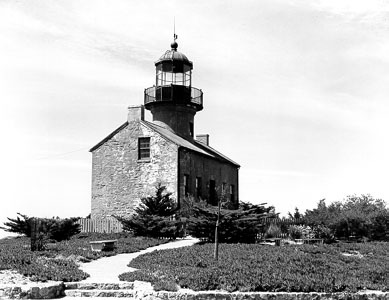
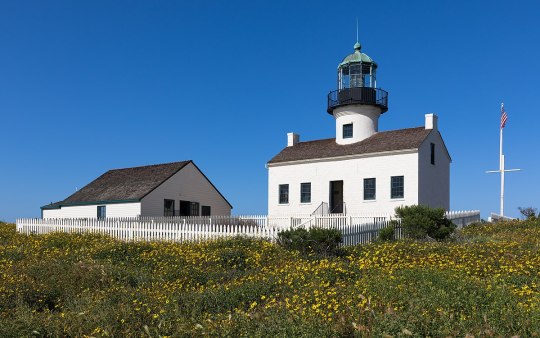
Source: United States Coast Guard | Wikimedia Commons
Constructed: 1855
Decommissioned: 1891
Have a favorite lighthouse? Curious about lighthouses in general? Send an ask!
3 notes
·
View notes
Text
LOTD: Point Loma (1)
~sorry for delay - meant for November 18th, 2022~
(from: http://www.ibiblio.org/lighthouse/ca2.htm)
Point Loma (1) (Old Point Loma)
1855. Inactive since 1891 (lit decoratively; the light source is offset from the center of the lens so the light is of no navigational value). Charted as a landmark. 46 ft (14 m) round cylindrical brick tower with lantern and gallery rising from the roof of 1-1/2 story sandstone keeper's house. Tower and house painted white, lantern black, lantern dome red. The 3rd order Fresnel lens from the Miles Rocks Light, San Francisco, is mounted in the tower. Lighthouse painted white, lantern black. Lighthouse Digest has Gene Wild's July 2005 article on the history of the lighthouse, Anderson has a great page, Zhou Zhaoliang has a photo, Wikimedia has many photos, Huelse has a historic postcard view, and Google has a closeup street view and a satellite view. This lighthouse had a focal plane of 462 ft (141 m), but this proved to be too high: the light was often obscured by low clouds or fog. The lighthouse was ordered demolished in 1913; it was saved by the decision to make the area a national monument. In June 2003 the lighthouse was closed for six months while the station was restored to its 1880s appearance. The assistant keeper's house was reconstructed to serve as a visitor center and museum; the 3rd order Fresnel lens from the 1891 lighthouse and the 4th order Fresnel lens from the Ballast Point lighthouse are on display. There was another restoration in 2018-19; the lantern dome was repainted its original color of red. Located at the end of CA 209 on Point Loma, at the western end of San Diego. Site open, lighthouse and tower open daily except Thanksgiving Day and Christmas Day. Owner: U.S. National Park Service. Site manager: Cabrillo National Monument. . ARLHS USA-627.
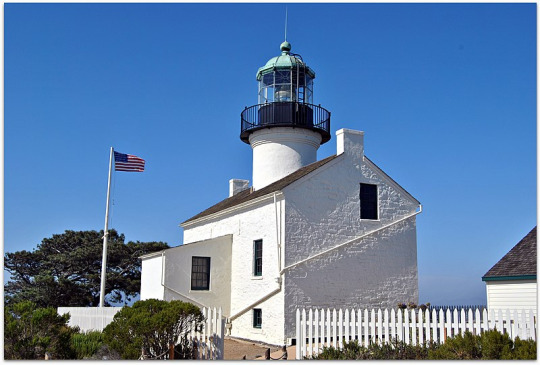
(photo found here; ©Loco Steve)
0 notes
Text
Where In The World Is Phryne Fisher?

We're not the only ones who are trying to find out where Phryne is off to next! Flat! Jack and Flat! Dottie are searching too! Jack called in some favors, and they started out at the Naval Base San Diego, since they saw Phryne had been nearby at Hotel del Coronado.

She was long gone, of course, so they visited the nearby Old Point Loma Lighthouse for a better overview of San Diego.

After it went out of its original service, the light house was abandoned and decaying.
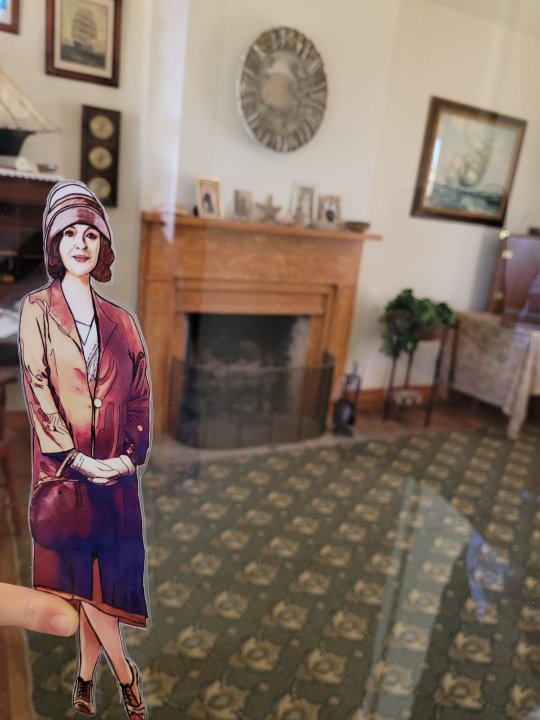
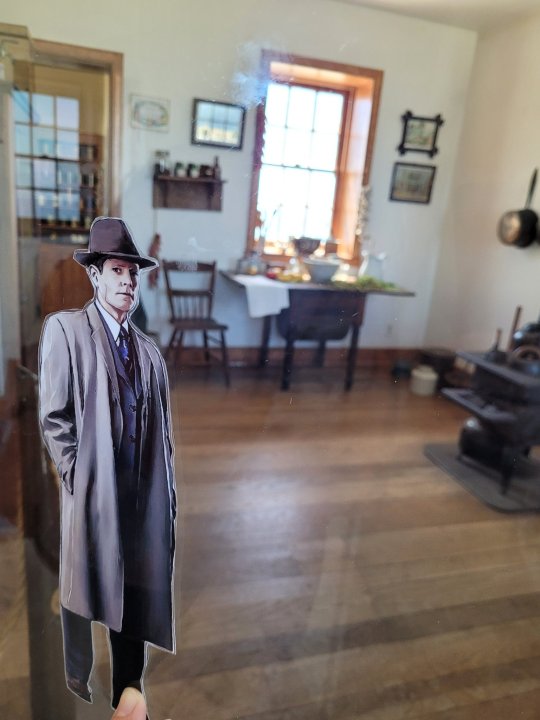
The Army began using it as a radio station during WWI. Cabrillo National Monument was created in 1913 on the 1/2-acre parcel where the lighthouse sits, and the land transferred to the National Park Service.
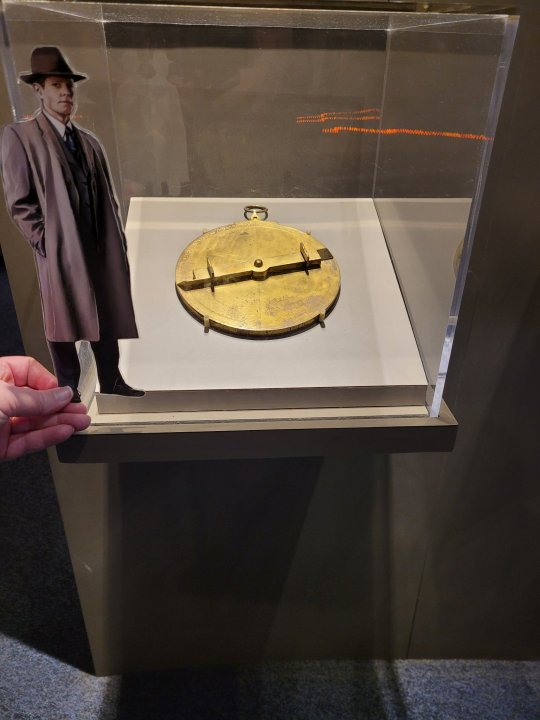
While they were up there, Jack picked up an Astrolabe. Early sailors like Juan Rodriguez Cabrillo (the first European to set foot on the west coast of the US) used an astrolabe by turning the pointer until a star or planet could be seen in a straight line through both pinhole sights. Sailors then calculated latitude by noting the angle of the celestial body above the horizon. It may be a longshot, but he's hoping it will lead him to a particular celestial body, Miss Fisher.
Hopefully Jack and Dot will catch up with Phryne at the Miss Fisher Con 2022 !
Link here : https://missfishercon.com/
#flatphryne #flatjack #flatdot #missfishercon2022 #Missfishersmurdermysteries #missfisherandthecryptoftears #everycloudproductions #AcornTV
15 notes
·
View notes
Text
Old Point Loma Lighthouse - Another View
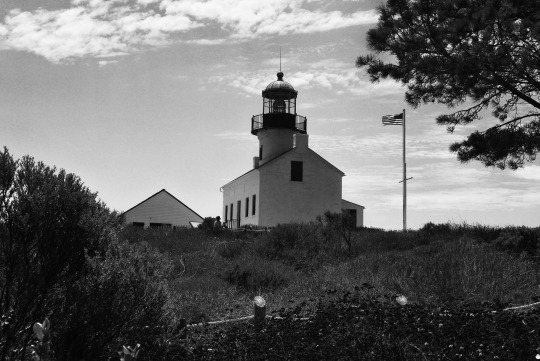
Old Point Loma Lighthouse - Another View - © 2022 – Robert N. Clinton (aka CyberShutterbug)
Read the full article
4 notes
·
View notes
Text
Old Point Loma Lighthouse, San Diego California // eramos_ca

Captivated by the charm of the Old Point Loma Lighthouse in San Diego, a true gem of California's coastline.
0 notes
Text
Old Point Loma Lighthouse, San Diego California // eramos_ca

Captivated by the charm of the Old Point Loma Lighthouse in San Diego, a true gem of California's coastline.
0 notes
Text
Old Point Loma Lighthouse, San Diego California // eramos_ca

Exploring the historic Old Point Loma Lighthouse in beautiful San Diego, California.
0 notes
Text
For your next #STAYCA
Check out the Point Loma Light House!
Cabrillo National Monument, located in Point Loma CA, where you and your family can take a day trip sightseeing, exploring the ocean, and hiking all in one. This specific destination has two museums right on the edge of the ocean. You're able to see and explore the inside of the old Point Loma lighthouse that was built in 1854. Taking the tour truly feels like opening a time capsule. In addition, the statue of Juan Rodriguez Cabrillo himself stands along the cliff of Point Loma where you’re able to read about Mr.Cabrillo’s life. Apart from a museum of artifacts and the history of Mr. Cabrillo‘s voyage of exploration. Right beside these historical monuments, you can visit the rocky intertidal zone. Where are you able to explore tide pools during low tide that are filled with tons of critters while watching the sunset. Visiting here allows you to hike small trails all around the historic sites, getting a view of all of Downtown San Diego at 462 feet above sea level!





#sandiego#downtownsd#pointloma#staycation#vacation#daytrips#adventure#beachstyle#beach#california#socalsunset#socalbeaches
0 notes
Photo

¡El antiguo faro de Point Loma! 😍💕 . Un faro histórico en San Diego California. 😉🌷 #AngieGurumi #tejerporplacer #tallerdeangiegurumi #amigurumi #virka #uncinetto #haken #häkeln #diyamigurumi #örgü #kawaii #handmadeamigurumi #tejido #weamiguru #tejeresmisuperpoder #amigurumipattern #amigurumiminiature #amigurumifrog #frog #knittersofinstagram #knitfrog #imadethisfrog #imadethisfroggy (en Old Point Loma Lighthouse) https://www.instagram.com/p/Cg4kn-ZrnGj/?igshid=NGJjMDIxMWI=
#angiegurumi#tejerporplacer#tallerdeangiegurumi#amigurumi#virka#uncinetto#haken#häkeln#diyamigurumi#örgü#kawaii#handmadeamigurumi#tejido#weamiguru#tejeresmisuperpoder#amigurumipattern#amigurumiminiature#amigurumifrog#frog#knittersofinstagram#knitfrog#imadethisfrog#imadethisfroggy
0 notes
Photo
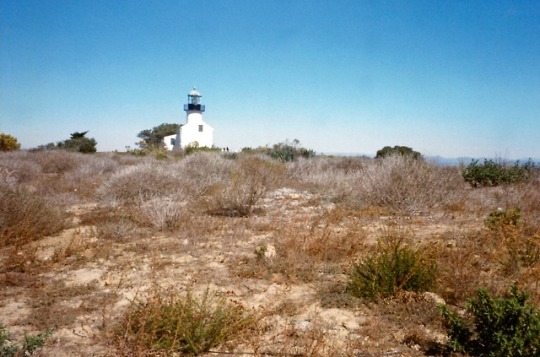
Old Point Loma Lighthouse, Cabrillo National Monument, San Diego, California, 1997.
#landscape#lighthouses#scrub#national monuments#cabrillo national monument#old point loma lighthouse#san diego county#california#1997#photographers on tumblr
12 notes
·
View notes
Text
LOTD: Santa Barbara
~sorry for delay - meant for April 21st, 2023~
(from: http://www.ibiblio.org/lighthouse/ca2.htm)
Santa Barbara (3)
1935 (station established 1856). Active; focal plane 142 ft (43 m); white flash every 10 s. 24 ft (7 m) square pyramidal white concrete tower without lantern. The aerobeacon lens used here from 1935 to 1977 is on display at the Point Vicente Interpretive Center in Rancho Palos Verdes. Matthew Cohen has a closeup photo, another closeup is available, Marinas.com has aerial photos, and Google has a satellite view. The Coast Guard has a photo of the original lighthouse, similar in design to the Old Point Loma Light; it was demolished after being heavily damaged in the earthquake of 29 June 1929. The modern light stands on the original site, adjacent to La Mesa Park. Located on Meigs Drive two blocks south of CA 225 in Santa Barbara. Site and tower closed. Owner/site manager: U.S. Coast Guard. ARLHS USA-736; Admiralty G3952; USCG 6-0195.
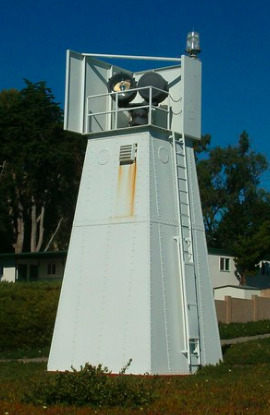
(full photo found here; ©Matthew E. Cohen on Flickr)
0 notes
Text
One of the best views of San Diego’s harbour and skyline can be found at the Cabrillo National Monument – in fact, a clear day will actually give you a good view over a wide expanse of the Pacific Ocean, Tijuana, and even Mexico’s Coronado Islands!
Situated at the southern tip of the Point Loma Peninsula in San Diego, California, the Cabrillo National Monument commemorates the landing of Juan Rodriguez Cabrillo at San Diego Bay on September 28, 1542 – the first time a European expedition had ever set foot on what later became the West Coast of the United States.
The first thing that greets you as you drive up into the national park is the fantastic Cabrillo Visitor Center, which in addition to its useful outdoor signage, viewing deck spots and smorgasbord of visitor information on hand, also sports a fantastically well done museum section, containing a fascinating array of carefully preserved items, information and interactive exhibits.
Then of course there is the unmissable limestone heroic statue of Cabrillo himself, a present to the USA from the Portuguese government. The original statue which was handed over by the Portuguese ambassador in 1938 was executed by sculptor Alvaro de Bree, with it weighing in at 6,400 kg and measuring 4.3 m in height.
However, weathering as a result of its exposed position dictated that the original sandstone model needed to eventually be replaced, and so in 1988 the (still striking) limestone replica that you see on site today made its appearance.
Interesting fact: During World War II the original Cabrillo Monument site was completely off-limits to the public thanks to the Point Loma Peninsula’s reservation for military purposes (San Diego is strategically incredibly important to the United States Navy), but this worked out well in the end – following the war, the national monument’s area was significantly enlarged thanks to work by both presidents Eisenhower and Ford.
Standing at around 57 hectares in size, the Cabrillo National Monument is also home to a number of other fascinating points of interest, like the Old Point Loma Lighthouse – one of the oldest lighthouses to ever operate on the West Coast of the United States of America.
And while this particular lighthouse now operates as a walk-in museum attraction only, just down the hill is the still very much in operation New Point Loma Lighthouse as well. There there are also the old gun batteries and retired radio station that houses an interesting the military history of the area exhibition.
In terms of nature activities, there are a number of short trails throughout the Cabrillo National Monument, including the popular two-mile long Bayside Trail that takes you through one one of the last remaining remnants of coastal sage scrub habitat in the world. It also in the process gives you spectacular views of Sand Diego Bay and the city beyond, Ballast Point (where Cabrillo landed), sandstone cliffs, and if the season is right, even some snow on the tops of the mountains!
The Coastal Tidepool Trail on the other hand takes you along its winding path down to the rocky intertidal area of the monument – which is incidentally one one of the best-protected and most easily accessible of rocky intertidal areas in southern California. Given the incredibly diverse and thriving animal communities to be found in the tidal pool area, this section also then happens to be one of the more interesting spots of the park to pay a visit to.
Oh, and as if all this wasn’t yet enough, given its high elevation, the Cabrillo National Monument is also a brilliant whale watching spot – the perfect place in fact to watch migrating Gray Whales pass by from December through February!
So pretty hard not to include this as one of the many tourist things to do here in San Diego then!
Related Link: Cabrillo National Monument | Wikipedia | San Diego | #USA2016
USA 2016 – 20 Cabrillo National Monument in San Diego (2016-07-18) One of the best views of San Diego's harbour and skyline can be found at the…
#cabrillo national monument#california#fort rosecrans national cemetery#juan rodriguez cabrillo#lighthouse#museum#national park service#old point loma lighthouse#san diego#san diego bay#sandstone#statue#usa#usa 2016
1 note
·
View note
Text
Old Point Loma Lighthouse
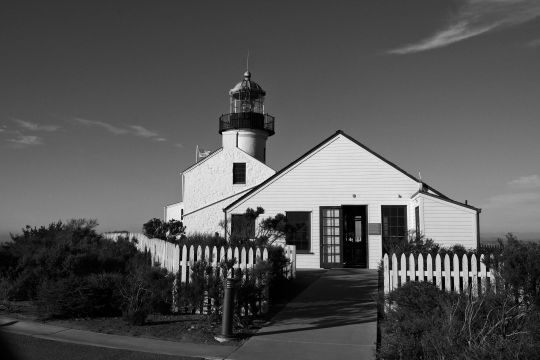
Old Point Loma Lighthouse - © 2023 – Robert N. Clinton (aka CyberShutterbug)
Read the full article
0 notes
Text
Unit 01: My Old Point Loma Lighthouse
In the bustling heart of Toronto, amidst concrete jungles and the hum of urban life, my journey with nature began as a story of limited exposure. Looking back, I grew up surrounded by the symphony of car horns rather than bird songs, and towering buildings instead of tree canopies, hence why I thought the natural world seemed like a distant realm. Yet, today, it's the city that appears distant.
In the metaphorical sense, the urban landscape was my initial stormy sea, and the journey into nature became my guiding light, my personal lighthouse. Much like the Old Point Loma Lighthouse in San Diego, nature acted as a beacon of hope and authenticity, guiding me away from the dangers of a disconnected and concrete-dominated environment. Nature, in this context, became a place of tranquility and curiosity, similar to the peace provided by interpretive sites like national parks and museums. As an environmental science major, my relationship with nature became a source of stability, mirroring the role of a lighthouse in tumultuous times, where I strive to understand and explore beyond what is visible to the naked eye.
In hindsight, my current relationship with nature was not caused by one experience, instead, it was developed by many cascading experiences. Passionate and knowledgeable teachers, for example, have served as guides on my journey toward nature, illuminating the intricate processes, cycles, and interactions that define the natural world, much like interpreters at national parks. These educators didn’t confine learning to the classroom; they organized field trips to the science center, parks, and exhibits, providing firsthand experiences that brought the theories to life. Through these field trips, I was exposed to experts who were well-versed in all things nature. Their insights, combined with interpretive efforts such as brochures and walks, enriched my understanding and sparked a genuine passion for nature and became a “peak experience”. As the textbook suggests, these interpreters may not have directly provided an amazing experience, but they sure did offer the tools, which acted as levers, to influence and inspire their audience (me at least) to create their own transformative and unforgettable moments (Beck et al., 2018).
While formal education provided a structured learning experience, my friends and family acted as additional catalysts in deepening my connection with nature. Friends and family outings to parks and natural reserves became opportunities to share an appreciation for the outdoors, reminiscent of interpretive sites fostering a sense of place. Friends and family members who are avid gardeners played a role similar to interpreters, introducing me to the beauty of patience and the intricacies of the plant kingdom.
In this way, much like how the Old Point Loma Lighthouse in San Diego provides a sense of place and meaning to some, my journey from the bustling heart of Toronto to a deep connection with nature was illuminated by various interpreters - teachers, family, and friends, who collectively guided me away from the storms of urban life and provided a sense of place, security, and stability in the vast and complex world of nature. Hence, fulfilling the purpose of interpretation by helping me gain a profound sense of place and appreciation for the beauty and significance of my environment while striving to learn more about it (Beck et al., 2018).
Reference:
Beck, L., Cable, T. T., & Knudson, D. M. (2018). Interpreting cultural and natural heritage: for a better world. Sagamore Venture.
1 note
·
View note
